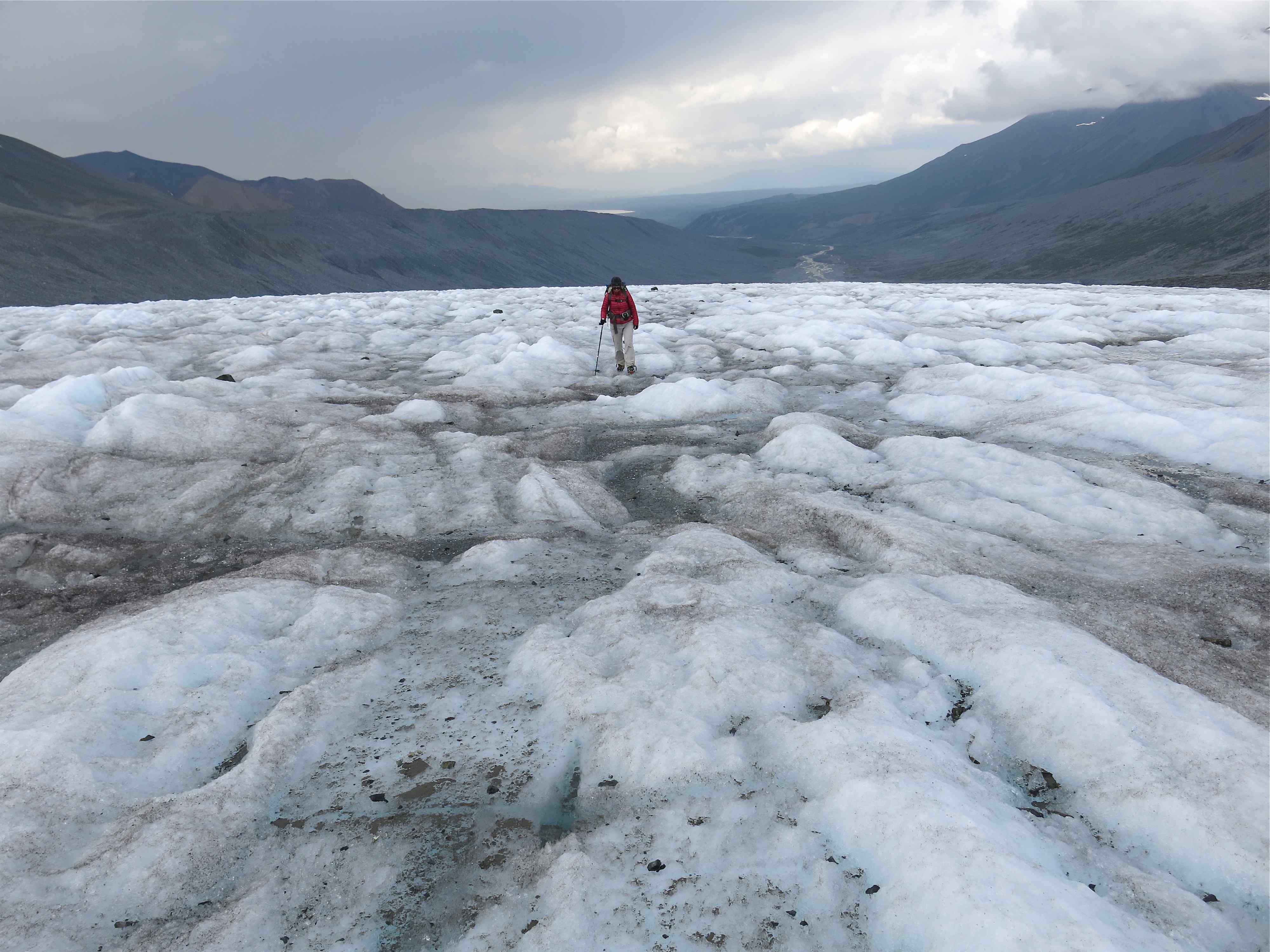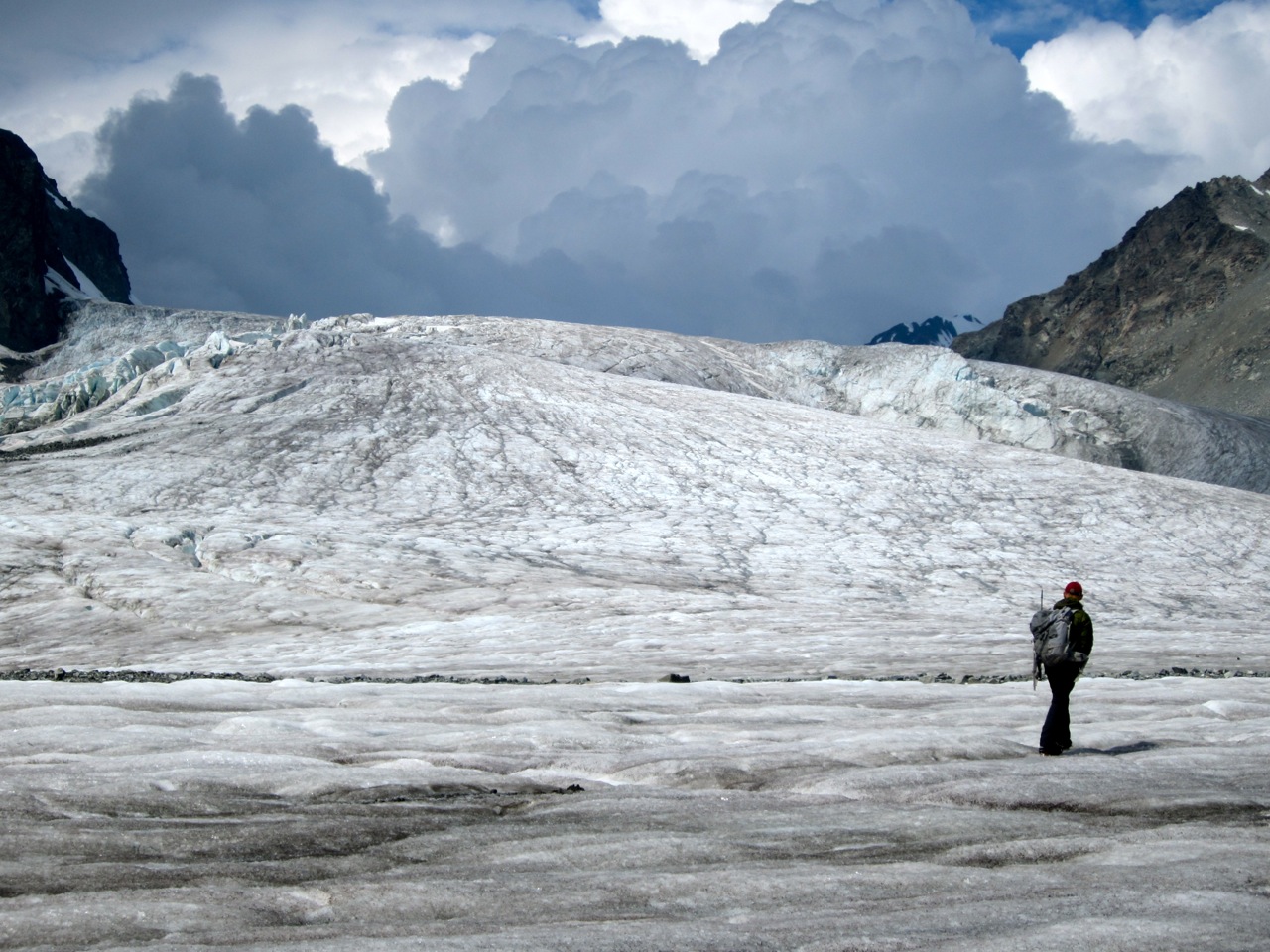Gulkana Glacier Hike – July 11, 2015
The Gulkana Glacier is one of three benchmark glaciers in the United States that the US Geological Survey have been monitoring since 1971. The “mass balance” of the Gulkana has been calculated at different times in an ongoing study about the effects of our dependence on fossil fuels and the related global warming crisis.
Of course, the irony of hiking to the glacier located near the Hoodoo’s of the Alaska Range along the Richardson Highway is that it is also the site of the largest singular mechanized, carbon-emitting sport event in Alaska, the Arctic Man. (Tailgate and heliskiing in Thompson Pass is a close second). Here, 1000’s of sledheads gather each spring to put a carbon emitting exclamation point on motorized winter recreation’s contribution to global warming and thus less snow. During the summer the area becomes a quiet destination for those seeking access to easy glacier travel and a wilderness experience leaving nothing more than footprints.
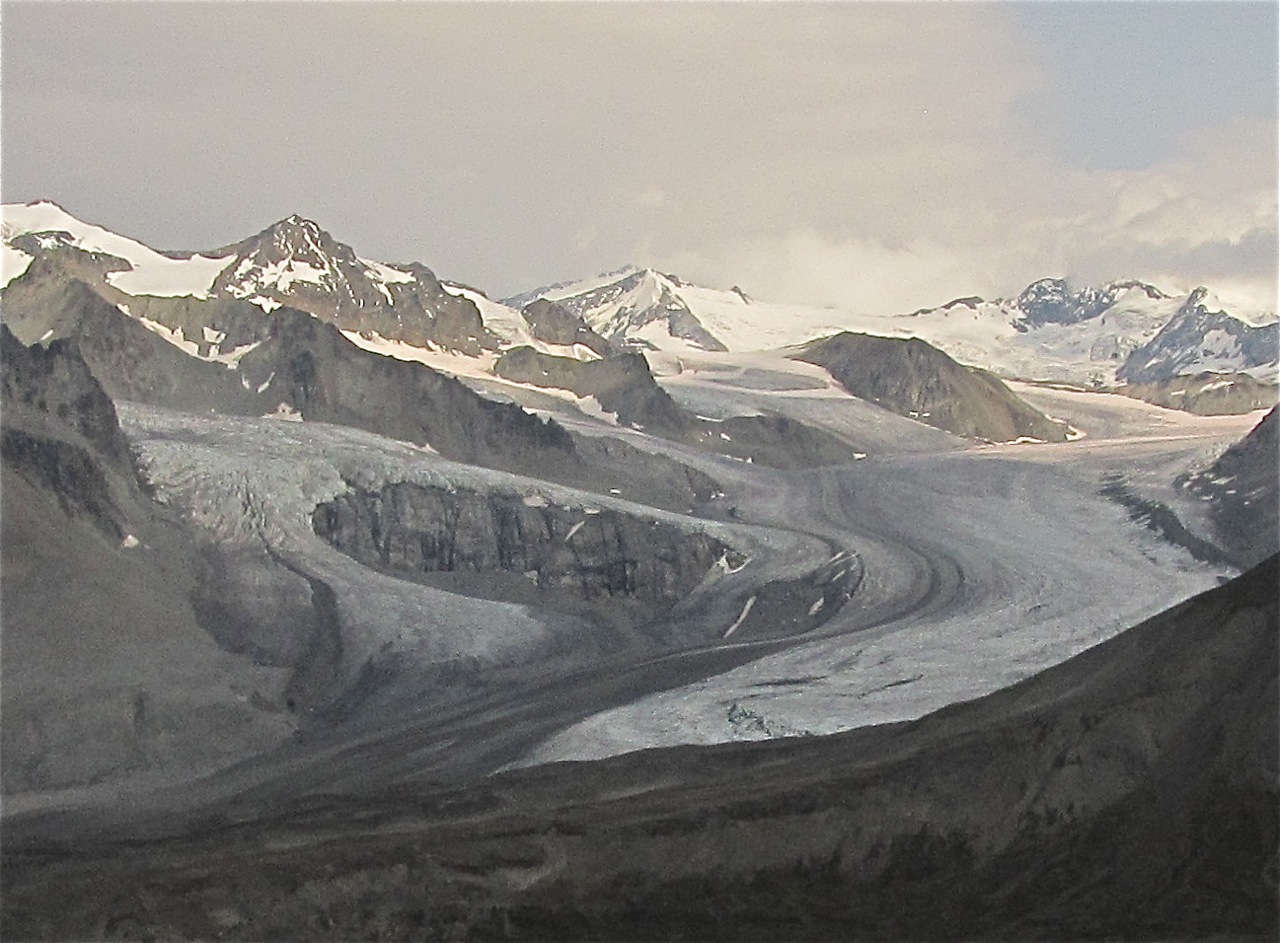
Gulkana Glacier 2012 (Kinney)
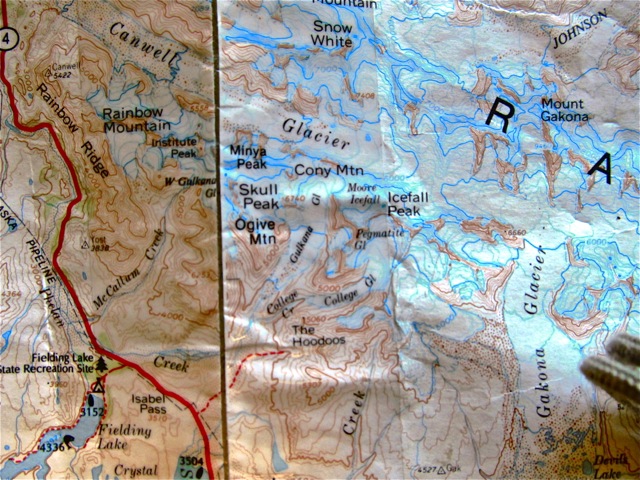 The trailhead for this special hike is located at the end of a two mile gravel road that exits the Richardson Highway to the east, a few miles north of Summit Lake. The last mile or so of the road is rough, but we made it through and camped Friday night at the end of the road.
The trailhead for this special hike is located at the end of a two mile gravel road that exits the Richardson Highway to the east, a few miles north of Summit Lake. The last mile or so of the road is rough, but we made it through and camped Friday night at the end of the road.
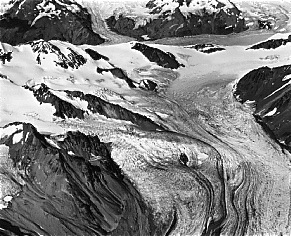
Gulkana Glacier 1967 (USGS)
On Saturday morning we woke to good weather and set off for the Gabrial Icefall via the Gulkana Glacier. It wasn’t long that we were reminded of Nepal. This foot bridge is maintained by the USGS for access across College Creek and to maintain a flow meter a short distance past the bridge.
Our intent was to hike a few miles, find a campsite near what little clear water we could find and return to camp that night after our hike. Here’s a picture outlining our route.
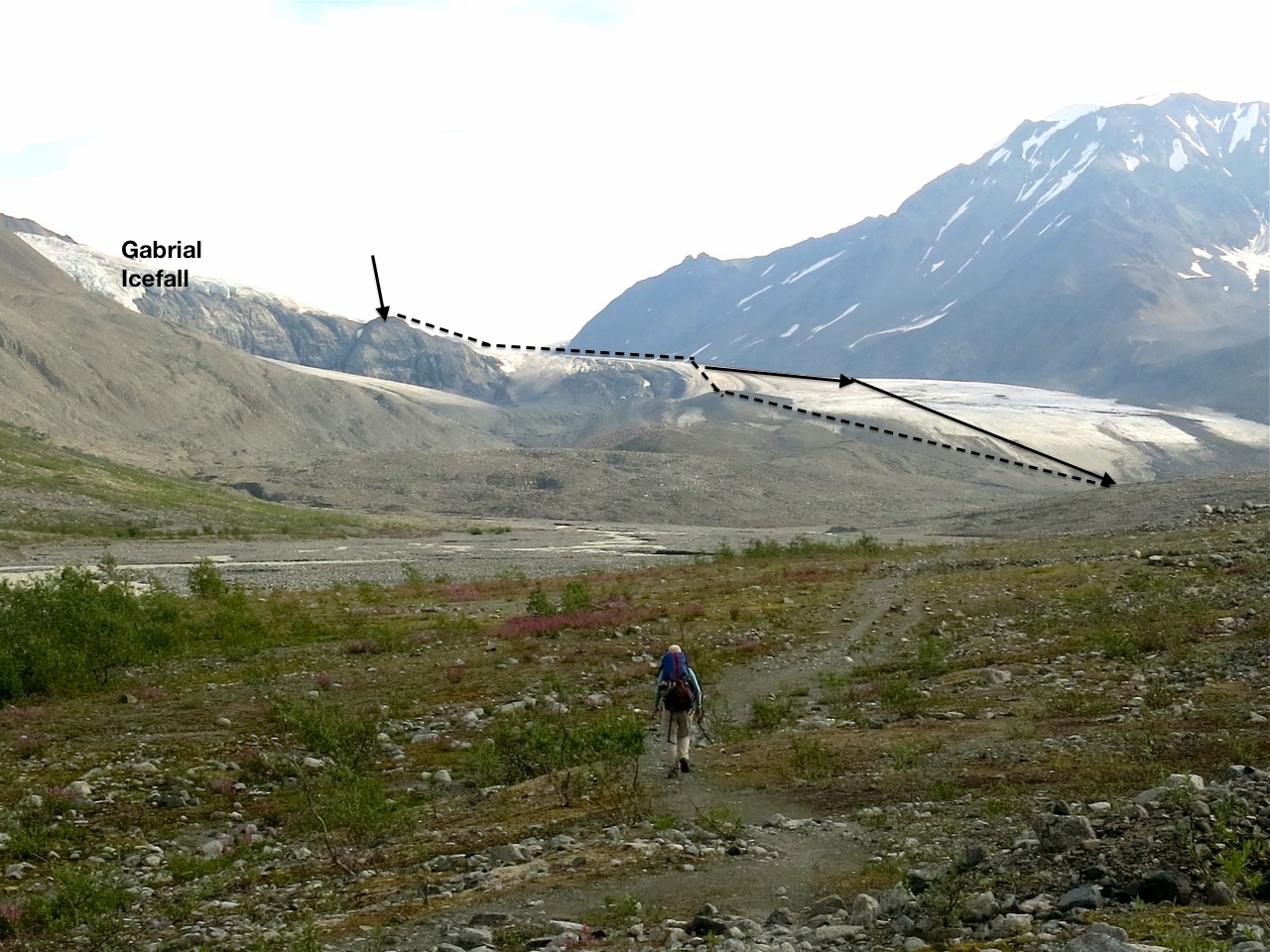 Along the way we passed a number of campsites from the past that at one time were at the terminus of the glacier. We found the last tent pad with water nearby, secured a camp and scurried ahead with our crampons.
Along the way we passed a number of campsites from the past that at one time were at the terminus of the glacier. We found the last tent pad with water nearby, secured a camp and scurried ahead with our crampons.
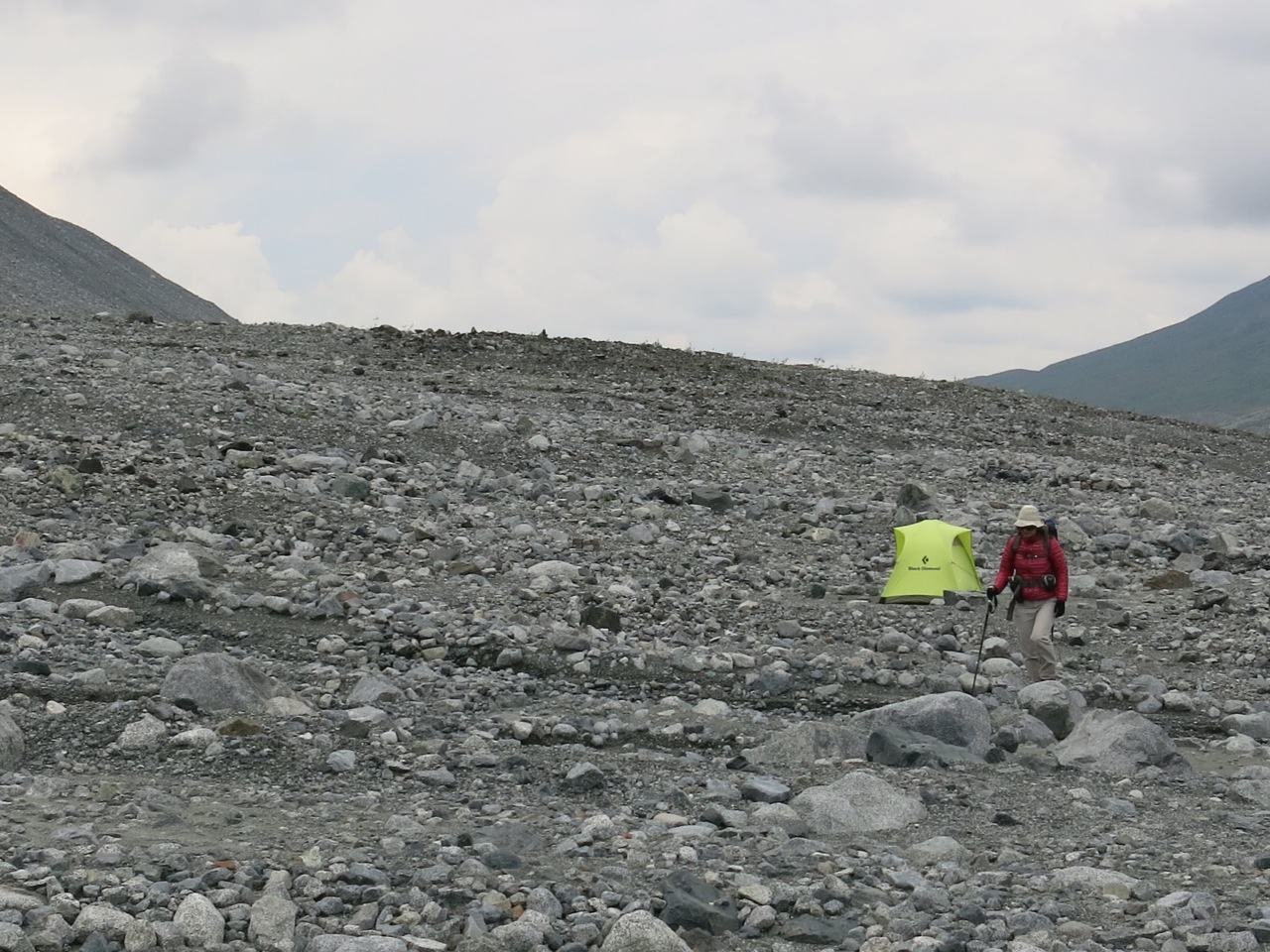
While the terminus may have been easier to get to in the past, today it requires some careful route finding around the creek and a steep hillside traverse laced with gravel sluffs, some exposing ice. The other option is to ford Gulkana Creek, but it was running a bit to wild to wade. We went through the hillside hazards one way and varied that route on the exit. 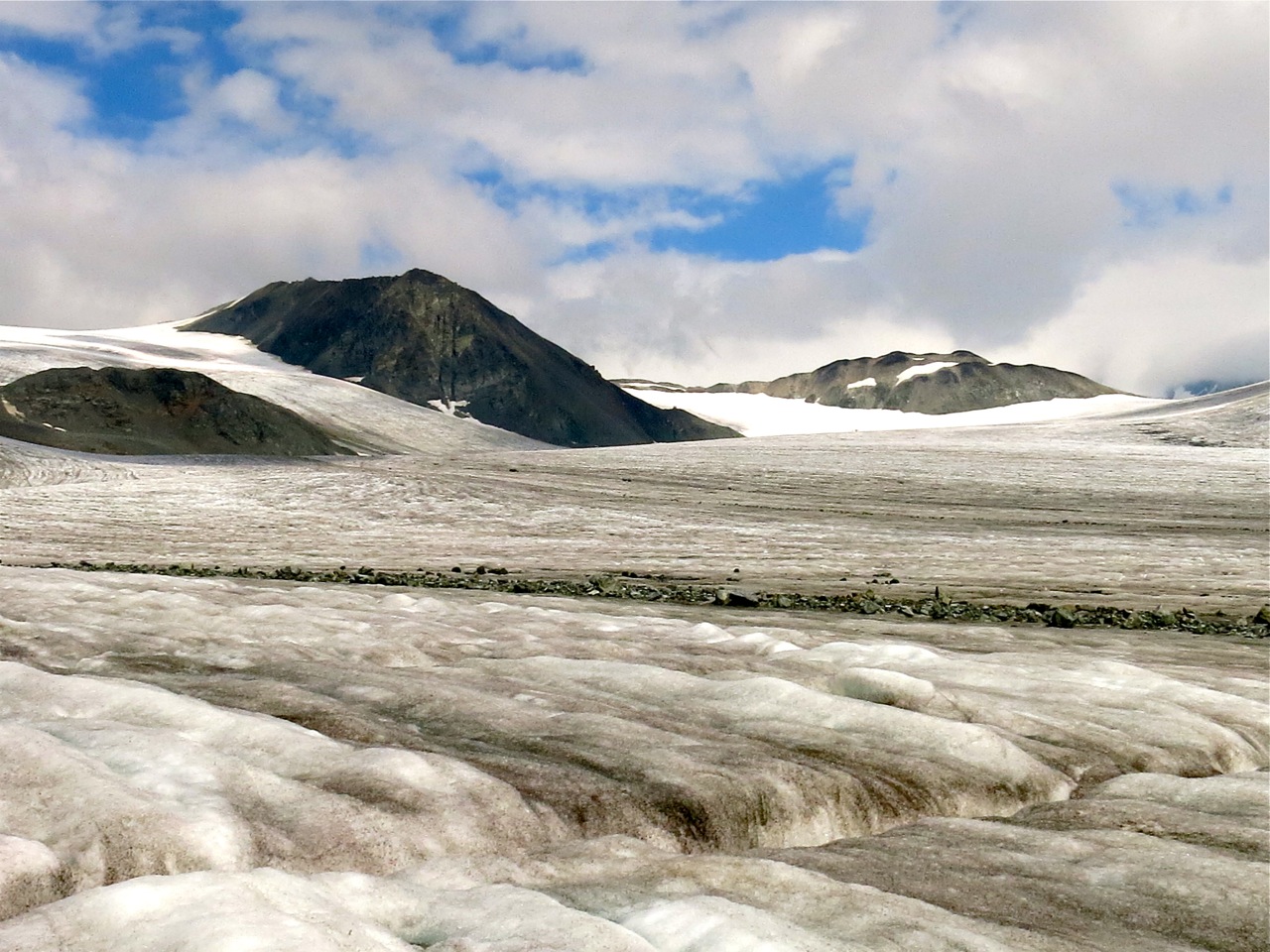
We hiked quite aways up the west side of the glacier without crampons as the surface was gravely with occasional boulders, but eventually we put them on when the ice began to clear. This amazing feature left me pondering how it developed. I figured strong north winds blow the largest boulders down the glacier gradient slowly plowing through the surface moraine.
Generally frozen, bumpy surface with water rivulets and thin crevasses on our route. In the distance one see Gulkana Creek and small selective sun spot on the edge of Summit Lake.
Once the glacier leveled off, we wandered west to the Gabrial Glacier and Icefall. Getting off the glacier and on to the promontory indicated on my picture above was not too bad as we scurried up loose rock over ice and above the cliff band that 50 years ago was covered in ice.
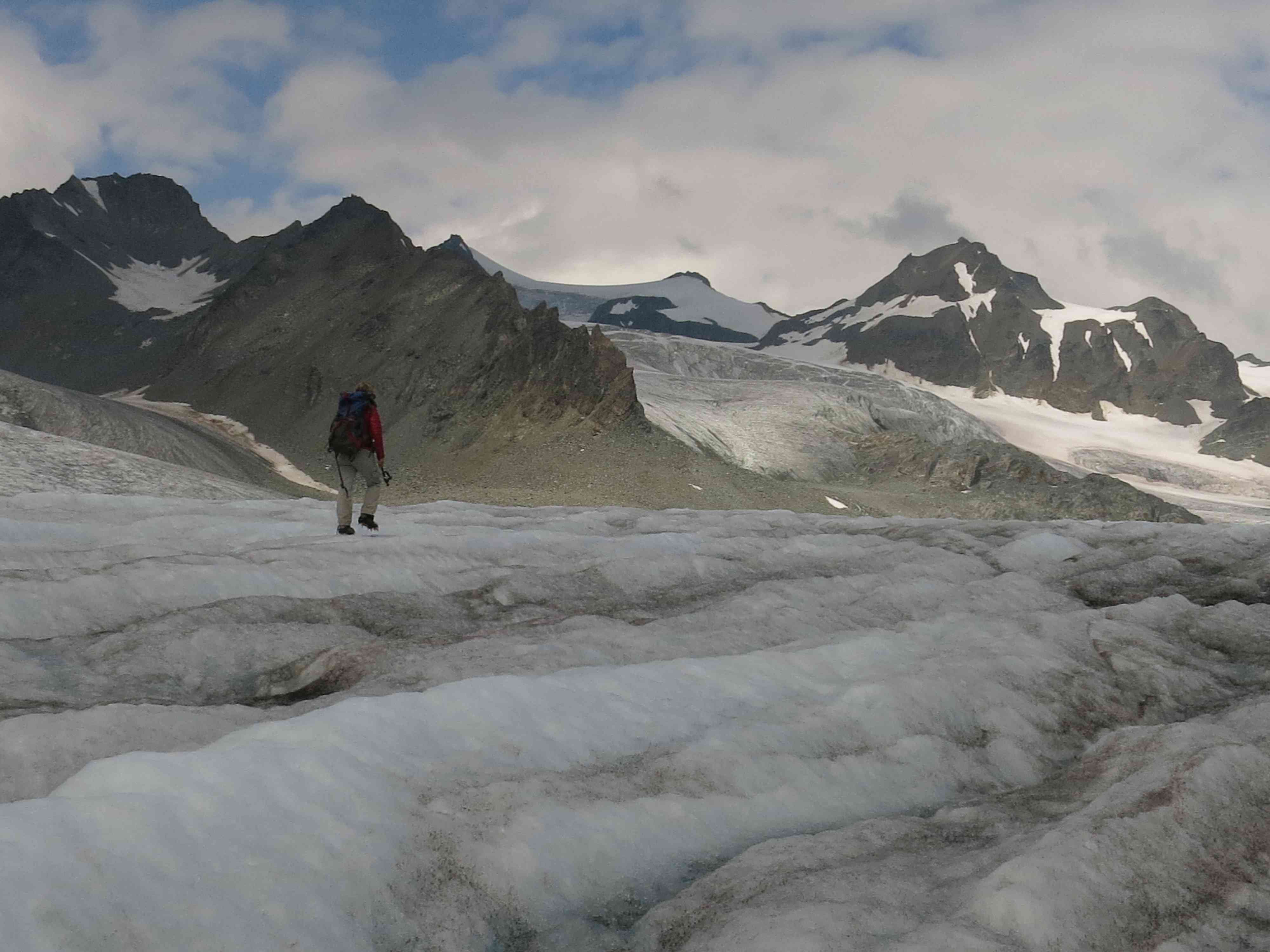
Budding cumulus threatened us most the day but provided more visual contrast in a barren, yet frozen landscape. This glacier was relatively free of crevasses except along the margins and the routes are numerous provided you have technical gear.
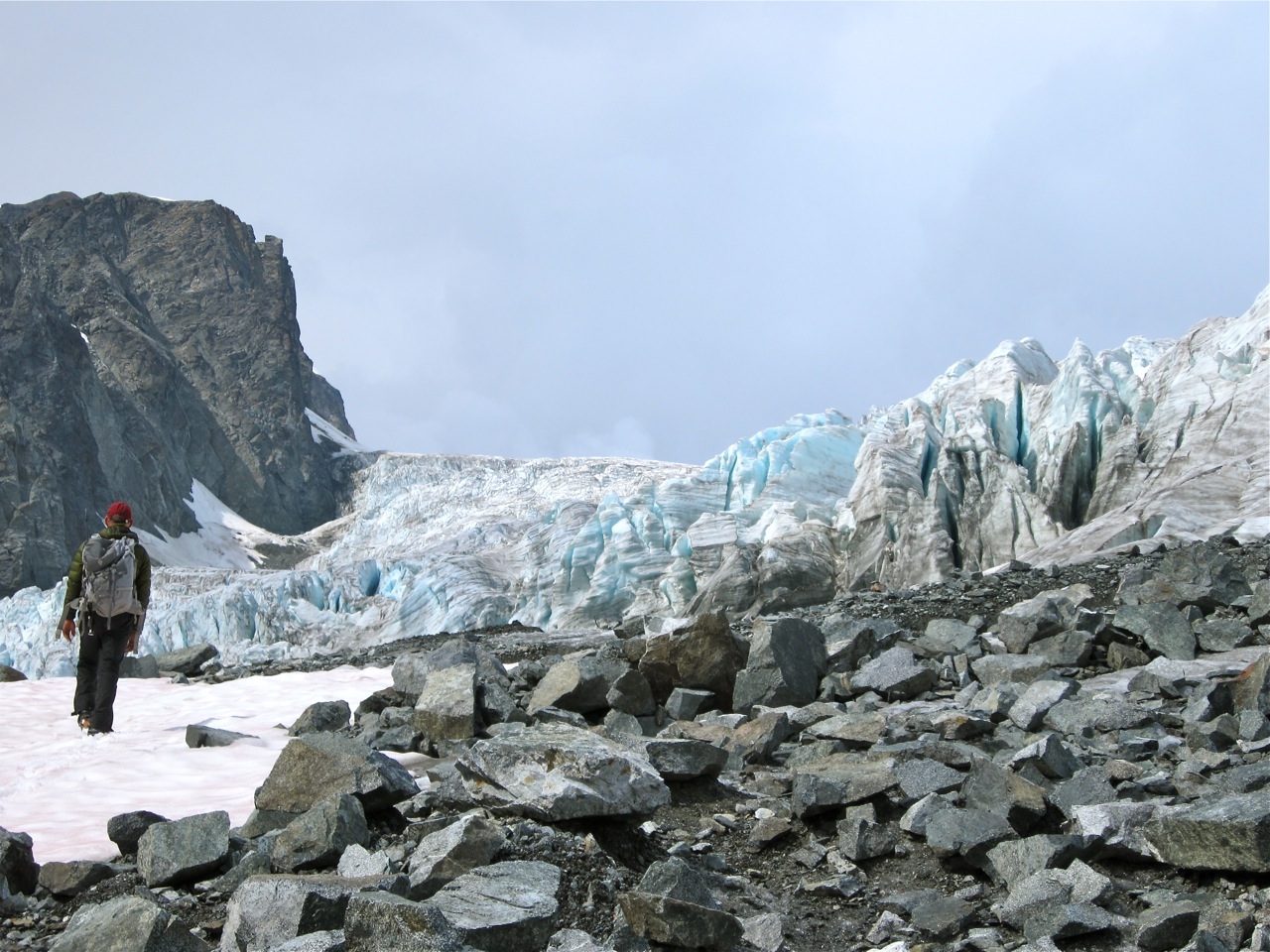 A few waves of light rain on Saturday night found us at camp Saturday night with a light northerly off the glacier and temps near 50F. Saturday morning after breakfast we hiked out slowly enjoying the lush green hillsides along the rushing headwaters of the Gulkana River.
A few waves of light rain on Saturday night found us at camp Saturday night with a light northerly off the glacier and temps near 50F. Saturday morning after breakfast we hiked out slowly enjoying the lush green hillsides along the rushing headwaters of the Gulkana River.
The chaos of creating new earth from glaciers is a stark reminder of the forces of nature altered by our dependence on fossil fuels. Higher tides and temperatures are some of the more obvious results we are seeing world-wide. Alaska is a major contributor to rising seas. Perhaps in the near future Irondogs, Arctic Mans and Tailgates will become become a thing of the past and not an uncontrolled contributor to a warming planet and its snowy mountains.



